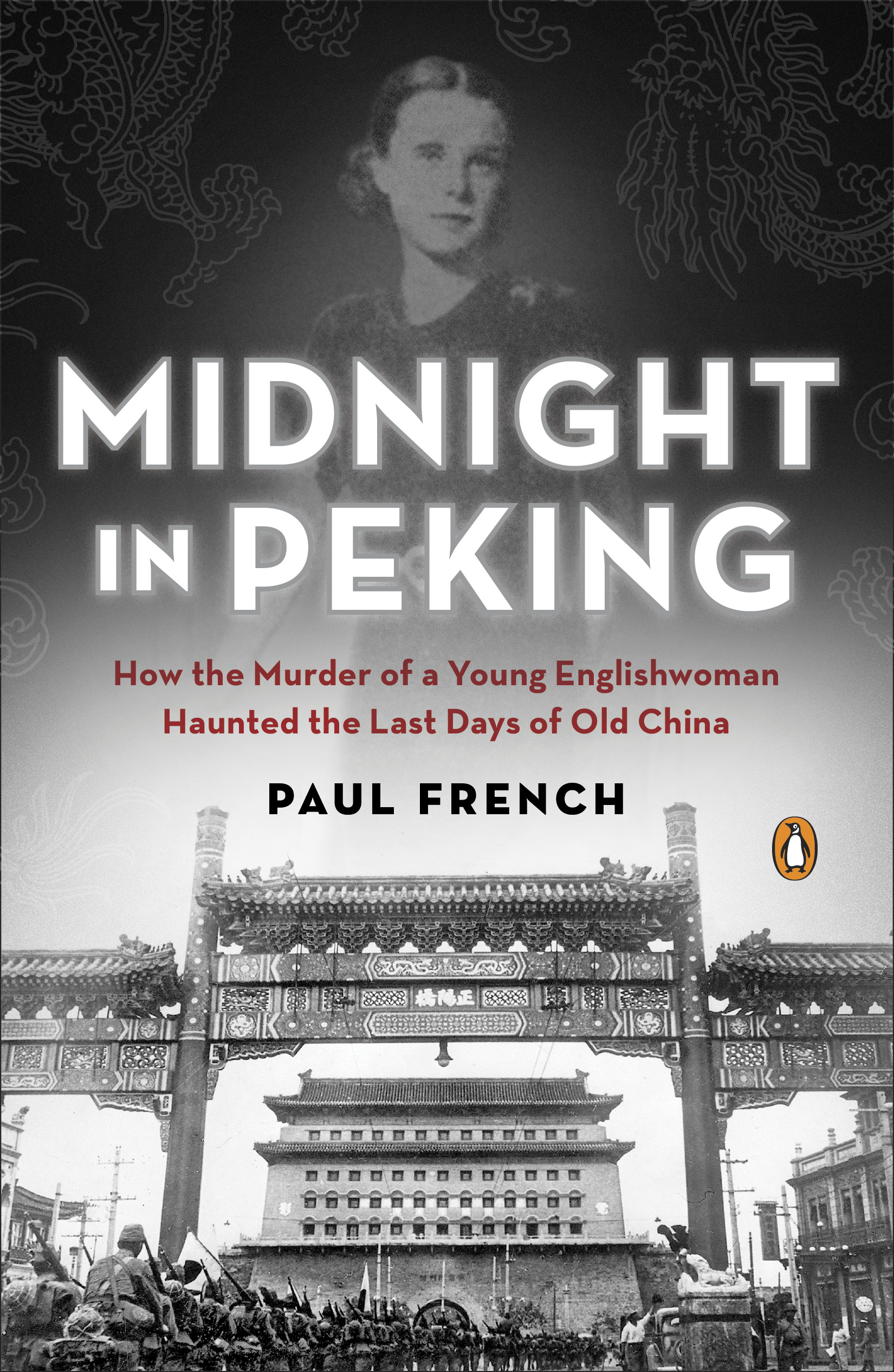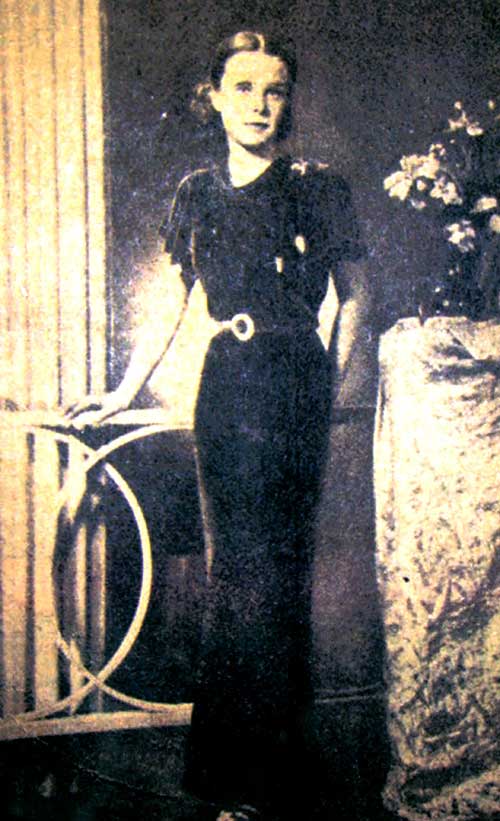Midnight In China
by Paul French
Penguin, 2012, 1st American Edition
ISBN: 978-0-14-312100-8
260pp, Hardcover, $26/US
b&w and color photo section
source list, no index
A Review
by Gene Stewart
Midnight In Peking: How the Murder of a Young Englishwoman Haunted the Last Days of Old China, by Paul French.
This book brilliantly presents a nearly-forgotten horrific crime in historical and social context. It is written in a clear prose that conveys meticulous research with artistry and grace. Concise portraits, succinct summaries, and blunt assessments keep this layered story focused on what happened to Pamela Werner. Justice for her is achieved through the alchemy of time, determination, and clarity of reasoning, and by the end a kind of magnificence is achieved on the part of a remarkable man who proved much more than a grieving father.
It is a story combining pre-Communist China’s turmoil, fox spirits, a rape club, rich and destitute soundrels, a city on the edge of war, a collapsing economy, a decadent social order, mutilation, incompetent officials, corrupt cops, and a murder few wanted solved. It features psychopathic thugs, uncontrolled soldiers despoiling and bullying, prisoners of war being tortured and humiliated, and remarkable individuals who persevere with heroic stoicism to solve a crime that might have passed unnoticed against such a backdrop had it happened only a few weeks later.
In 1937, Pamela Werner, 17, daughter of a famous scholar and ex British Consul living in Peking, went to ice-skate with her friends. She never returned home and her body was found mutilated, organs missing, on the barren ground by Fox Gate Tower, where fox spirits kept superstitious locals away at night for fear of being lured into just such a death. There was little blood and the violence shocked even the hardened detectives who came to see the body in situ. No one knew where this horror might lead.
Paul French, a British citizen residing in Shanghai, personally visited the scenes to investigate the crime, finding that most of the significant places remained virtually unchanged despite decades of Peking rebuilding. He spoke to the few living people who remembered the end of China’s colonial period, the Japanese invasion, the rise of Mao, and all the rest.
As one reads, one is struck by all the dead ends and frustrating taunts in the case. It often seems insoluable and cynicism teeters on the verge of triumphing over ordinary decency. French is meticulous in keeping us apprised of historical and social aspects surrounding the investigation, allowing readers to gain an appreciation of the milieu rare in historical true crime. Fascinating material is not presented in dry asides but interwoven as pertinent to finding Pamela’s killer. He shows us how it all relates, from what she was wearing at the time of her death to the Rape of Nanking happening hundreds of miles away; from the innocence of a young girl beginning to find her way in the world to the brutality of predators set on cold desecration of anything good.
Echoes of the standard human plight resonate throughout. We face similar dilemmas today.
History becomes a tide sweeping the crime away toward the backwaters of memory even as her father, in his seventies when he begins his quest to find the killer, demonstrates a dedication that, by the end, borders on the mythic. His is a remarkable story of determination and love, outraged justice and astonishing clarity of mind. His sheer strength of body and will are a marvel, yet French does not dwell on what the man must have gone through except to present the facts. This is not a sentimental book but one of brave bluntness.
Readers are given a tour of Peking like no other, one that shows the high and low, the fine and the sordid set into a context that makes it understandable. Paul French is an insightful historian with a gift for precise narrative. He wastes no words and knows how to condense complex material into paragraphs and scenes that pull the reader along.
Parallels to both the murder of the British Earl of Erroll in Kenya only four years after Pamela Werner’s murder in Peking, (see the book White Mischief by James Fox, if you can find a copy), and to the Elizabeth Short/Black Dahlia murder in Los Angeles only ten years later, (see any number of books and movies), are not unwarranted. French’s book is more authoritative and less garish, with better overview and historical context.
Unlike Erik Larson’s method of paralleling technological developments from a given crime’s time period, French simply allows all the threads to converge into a cohesive narrative without melodrama. This phlegmatic approach is both astringent and refreshing, allowing the reader to form personal responses, to ask personal questions of how it might feel.
In one chapter only, “Invitation to a Party”, near the end, are we given a subjective speculation on what her last hours must have been like for Pamela, and even this is rooted in her father’s notes from his years of investigation, found in the British Imperial Archive at Kew by French.
A movie was made of White Mischief, the case also inspiring the Hemingway story “The Short, Happy Life of Francis MacComber”. The Black Dahlia has inspired a cottage industry of books and movies. Pamela Werner’s case might well serve as the basis for a movie, too, dramatized in the style of Spielberg’s film of J. G. Ballard’s Empire of the Sun, which is also set in 1930s China, but such a treatment would diminish and over-simplify the factual layers condensed in French’s elegant book. Perhaps this obstacle is what has also placed Erik Larson’s books in what Hollywood calls development hell; no one can quite figure out how to produce a coherent script.
Be glad we have the book. Read it if you are interested in history, fact, rationality triumphing over official obfuscation, and if you enjoy a great story well told that happens to be factual and true both.
No one was brought to legal justice for Pamela Werner’s murder but this book achieves a moral justice for her, and for her father, that is all the more valuable.
/// /// ///



